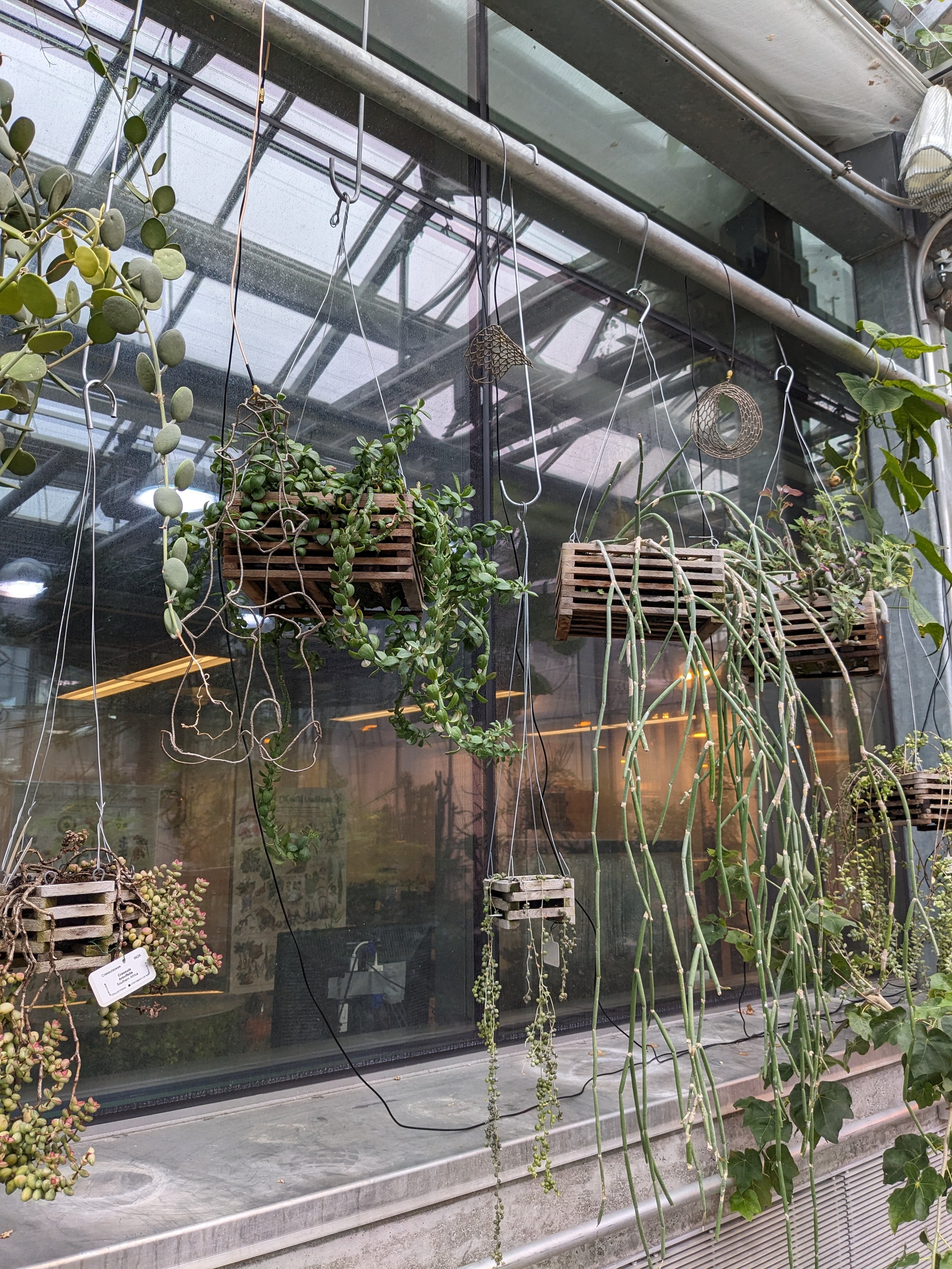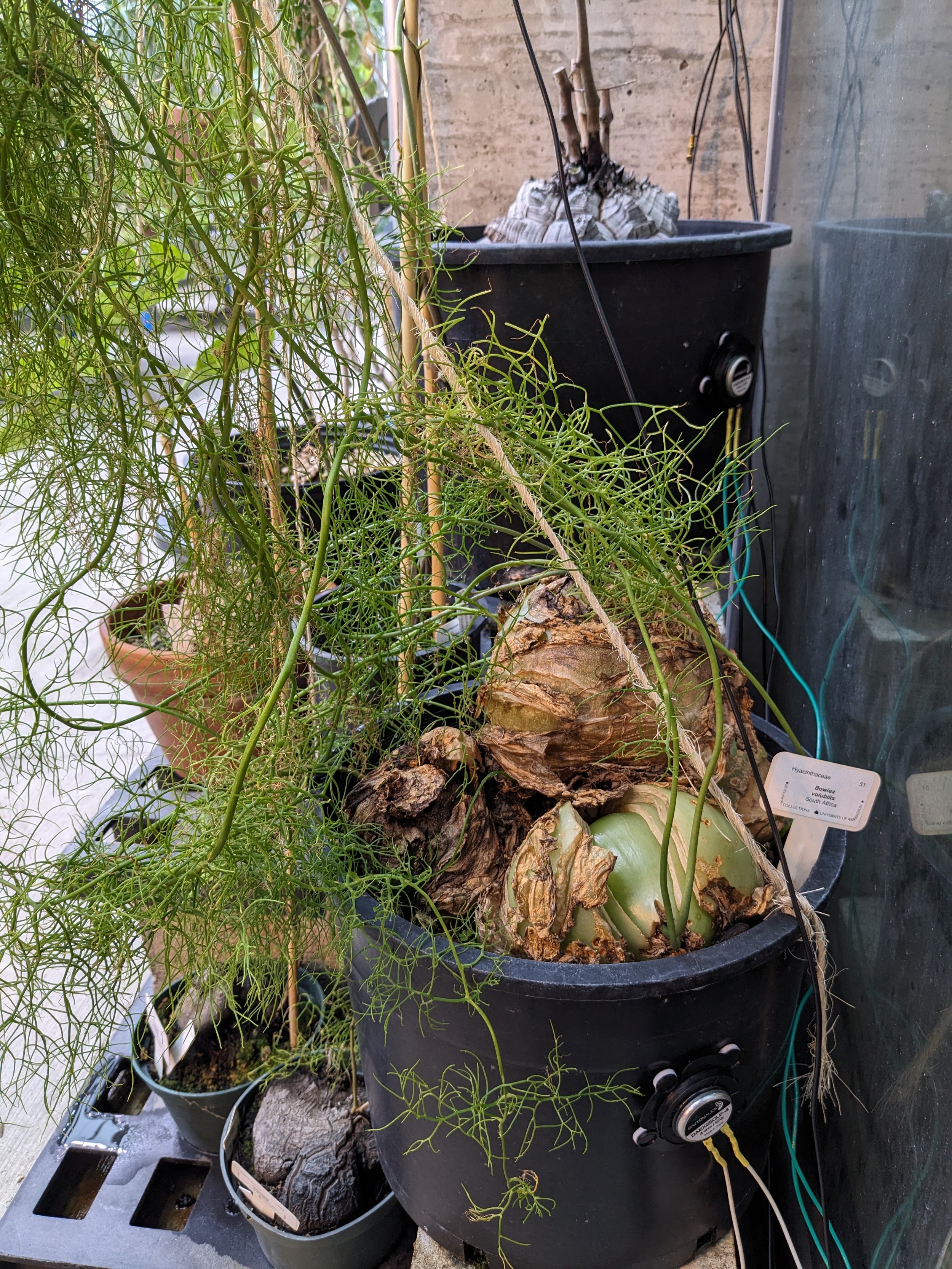Kirigami
Antennas
Kirigami Antennas is a research exploration centering on e-textile meta-materials, using the technique of Kirigami, a Japanese art-making process where flat paper is cut and folded to form 3-dimensional shapes.
In this project, kirigami-inspired freestanding lace patterns have been designed in order to fabricate soft sculptural 3D antennas that are cognizant of their use and relation to space.
Research project assistant and collaborator: Zoe Kaputa
With the progression of technology as integrated into daily life, physical tech has become increasingly embedded or hidden from the user’s view. Because of this design change, many of the aesthetics that previously defined everyday technology have disappeared from the public eye. Our ability to connect the capability of technology with the spacial world it utilizes has disappeared with it. This notion is especially true for antenna design. An object that was once visible on cars, houses, and phones is now so embedded in the devices that use it that its technology is essentially formless. Kirigami Antennas is a research exploration centering on e-textile meta-materials, designing antennas that are cognizant of their use and relation to space. This collection of antennas are not embedded nor hidden. They instead borrow from the art of Kirigami to re-insert themselves into the 3D space from which they receive their signals. Through experimentation with Kirigami antenna shapes, we are able to design freestanding lace antennas that effectively received electromagnetic signals at a wide range of frequencies, picking up AM, FM, and HAM radio, along with other data transmissions. Kirigami Antennas provides a space for experimentation with antennas as objects that help us reach and search through space.
Motivation
This research project was inspired on the work of UW Computer Science Prof. Jennifer Mankoff Applications of a Machine Embroidered Metamaterial which explores textile metamaterials and their mechanical processes. Mankoff's work namely uses machine embroidery to generate multi-planar Kirigami designs to use as various types of sensors. As an alternative, these designs held many possibilities as being used to receive electromagnetic signals. The use of Kirigami patterns reinserts antennas into 3D space, specifically in a way that emphasizes their ability to receive signals that stretch through space in the same way that they do. Therefore, these antennas bring an encompassing aesthetic back to physical manifestation of radio antennas, which can shape our relationship the signals we receive through these antennas. We can begin to remember the breadth and importance of these now-invisible pieces of technology.
Related Works
Beyond Mankoff's work on metamaterials, this work builds on Erin Lewis's Disobedient Antennas and Radiant Textiles. Lewis's explorations of antennas as devices to not need to be physically minimized provides ample conceptual inspiration for our own exploration of antennas. Similarly, in the collaborative work with Audrey Briot Listening Space, Antennas and Software-Defined Radios are applied in novel ways which challenge our interactions with this established technology.
Other personal previous explorations, like Embodied RF Ecologies and Fractal Antennae, along with Constanza Pina's Khipu also use embroidered antenna technology which are similar to our own. Kirigami Antennas draws inspiration and builds off of the practices established in these works.
This project also builds upon genre of Radio Art. Since the late 1990s, Radio Artists have been creating radios and radio transmission as an art form. Likewise, our antennas treat the fabrication of a radio as an art-making process.
Motivation
Experimentation was a key aspect of our creative process. This project is mainly one of material exploration, rather than product development. We began by designing plausible Kirigami patterns to make the antennas with, then embroidered these patterns using machine embroidery with conductive thread. Finally, the effectiveness of the antennas at picking up signals was tested. Much of our process involved iterating on the design and fabrication of the antennas in order to create structures which were effective and visually stimulating.
For more details on the methodology, antenna design, crafting and measurements, read our ISWC paper here: https://dl.acm.org/doi/10.1145/3594739.3610780
Beyond using Software Defined Radios to test the electromagnetic signals picked up by the antennas, we used multiple SDRs with the antennas for conducting sound art experiments. More specifically, signals were received and played from several of the Kirigami antennas at once, generating a symphony of everchanging radio signals.
The work has been presented so far in two iterations. As a sound performance for the Nonseq Curators Concert at the Chapel Performance Space in the Good Shepherd Center in Seattle. And as an e-textile sound installation - as seen in the pictures below from the exhibition Uncanny Garden at the UW Biology Greenhouse.













Exhibitions and Performances
2024
Uncanny Garden, UW Biology Greenhouse, University of Washington, Seattle, WA.
2023
ISWC23 Design Exhibition The 16th Annual Design Exhibition at the International Symposium on Wearable Computers Cancún, Mexico. Chaired by Clint Zeagler, Eldy Lazaro and Katia Vega.
NonSeq Curators Concert, The Chapel Performance Space, Good Shepherd Center in Wallingford, Seattle, WA.
Publications
Kaputa, Zoe and Psarra, Afroditi. 2023. Kirigami Antennas. In Adjunct Proceedings of the 2023 ACM International Joint Conference on Pervasive and Ubiquitous Computing & the 2023 ACM International Symposium on Wearable Computing (UbiComp/ISWC '23 Adjunct). Association for Computing Machinery, New York, NY, USA, 281–285. https://doi.org/10.1145/3594739.3610780 (Best in Fiber Arts Award)
